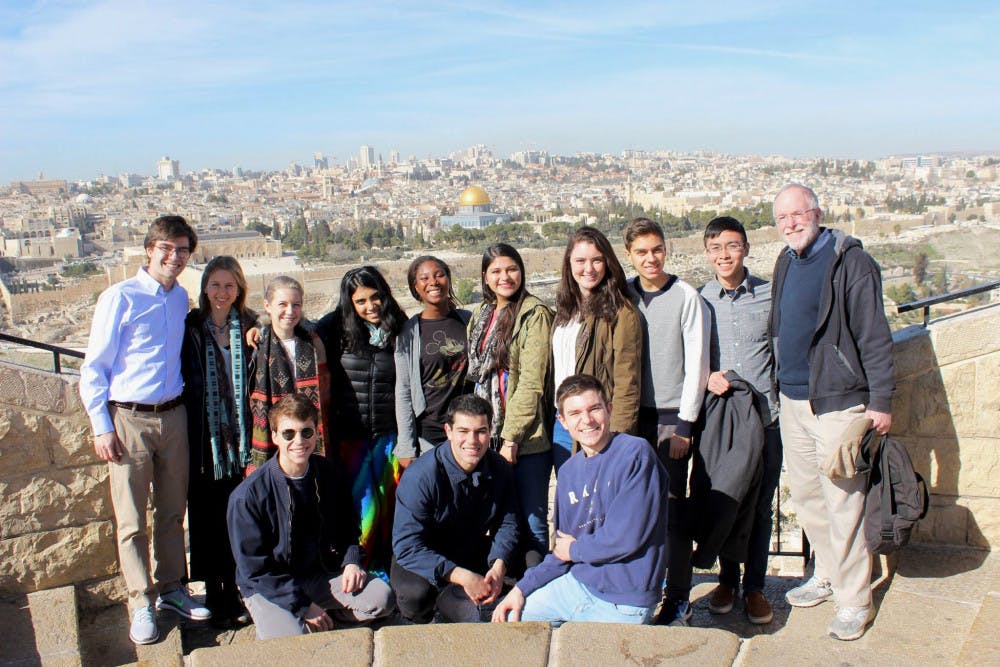The University launched its Wintersession pilot this January, allowing students to explore one niche subject in the span of three to five weeks and offering on-campus, online and destination courses across many disciplines.
First generation students were well represented within Wintersession enrollment figures — 32.5 percent of participants were first-generation students, said Maud Mandel, dean of the College.
The class years were evenly distributed, though fewer seniors participated in Wintersession, she said.
Of the 126 students who enrolled in Wintersession, 54.8 percent identified as female and 42.2 percent as male, Mandel said. The racial makeup of enrolled students generally represented the University’s demographics, Mandel said.
Both students and professors alike who took part in Wintersession praised the unique opportunity to be immersed in one discipline over a short span of time.
“Having this course every day gave me the opportunity to focus in on one subject, which can be harder when taking four or five courses,” said Jonathan Weisskoff ’20, who took the single online course offered, ENGL0930: “Introduction to Creative Nonfiction” taught by Elizabeth Taylor, co-director of the nonfiction writing program. Weisskoff said the course provided him with a solid day-to-day structure, including anywhere from five to 10 hours of daily work.
The online course also allowed students to engage more than in a typical course, Taylor said. “The shy and international students are grateful, because they actually get more of an opportunity to be heard,” she said. Unlike the course she offers during the semester, Taylor’s online course was supported with a writing fellow due to the course’s fast-paced nature. Both Taylor and Weisskoff said they hoped that additional online courses would be added in future Wintersessions.
On campus, six courses were offered in departments ranging from visual arts to engineering to American studies. Nicola Young ’18.5, Constance Gamache ’18, Marisa Kouroubacalis ’19.5 and David Lu ’20 worked as a team within ENGN 0110: “Lean LaunchPad” to create a mobile app promoting hospital efficiency and patient-doctor communication. Teams of students proposed their own startup ideas and learned how to implement them in the community.
“We spend about half of our time in the classroom and half of our time in the community, adding up to about a 12-hour day,” said Young, whose team travelled to nearby hospitals to work on their app. The intensity of the course gave a realistic sense of the hectic nature of a start-up, Kouroubacalis said.
Students and professors said they appreciated the sustained and concentrated learning necessitated by condensing a standard 180-hour course into a month’s length.
“It’s almost like running a marathon as opposed to doing 100-yard sprints,” said Associate Professor of History Neil Safier, who taught the on-campus course HIST 1974K: “Maps and Empires: A Journey through the Cartographic Collection of the John Carter Brown Library.”
Resources such as Counseling and Psychological Services, Student Employee Accessibility Services and Health Services were all available to on-campus students if needed. But Gamache said the fast-paced nature of her course made finding time for them difficult.
Some students felt that the housing situation could be improved in future Wintersessions. Kouroubacalis was not relocated to a dorm with other Wintersession students, and living in an entire dorm alone was isolating and may cause students in future Wintersessions to feel unsafe, she said. Students may benefit if all of the Wintersession students live in proximity to one another, she added.
Wintersession also offered three destination courses, which travelled to Thailand, Hawaii and Israel/Palestine.
These 12-person travel courses were completely filled, Mandel said. The on-campus and online 20-person courses were mostly full, although each had a bit of space; AMST1500B: “Broadway Modern: Race, Gender, Class, and the American Musical” was the most popular — it had 17 spots filled, Mandel said.
Many of the students interviewed said Wintersession gave them an opportunity to pursue a subject they ordinarily would not have the time for during the regular school year.
“Students are coming from a lot of different disciplines and concentrations, from geochemistry to philosophy,” Safier said, whose class learned about cartography through primary resources. The course gave students with a limited background in history the experience of an advanced researcher in the field, Safier added.
Many students in Taylor’s writing class were science concentrators, “perhaps because their regular semester can be eaten up by lab requirements,” Taylor said.
Similar to how a student gains one credit through one Wintersession course, the faculty are similarly compensated, Taylor said. One Wintersession course equates to one of the regular semester-long courses typically taught by a professor, she added.
Wintersession is currently on a three-year pilot, and Mandel said she anticipates having the same number of courses each year, though the courses themselves will differ, Mandel said.
“We might tinker with the distribution of online, on-campus and destination (courses), depending on faculty submissions,” Mandel said.
Future Wintersessions might appeal to those looking for something to do over the University’s particularly long winter break, Mandel said. “I would encourage students to take advantage of (Wintersession), after going home for the holidays, coming back for one of these opportunities.”
Correction: A previous version of this article said that 82.5% of the students who participated in Wintersession were first-generation. In fact, 32.5% of those students were first-generation students. The Herald regrets the error.





